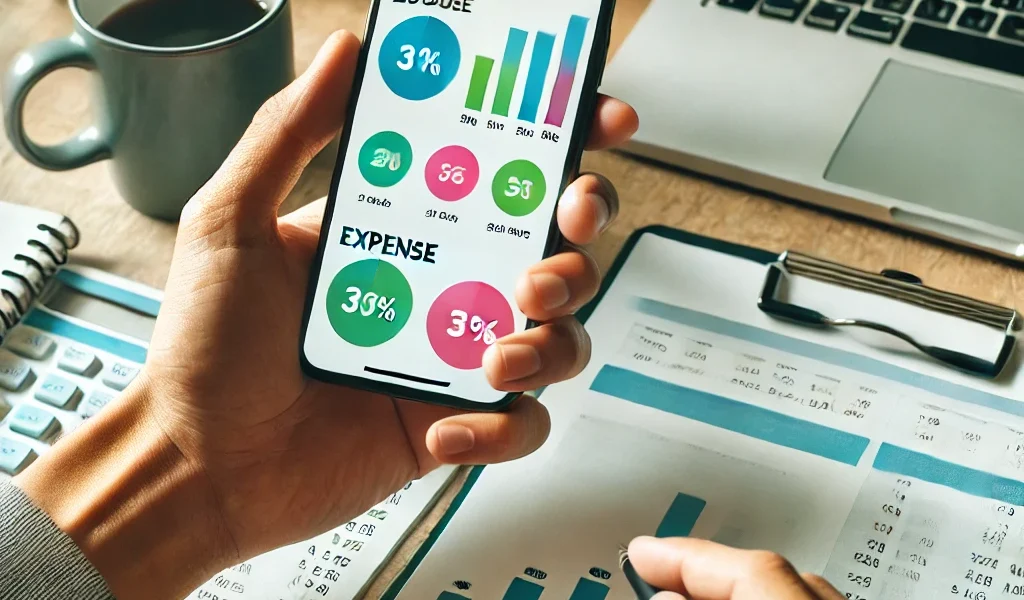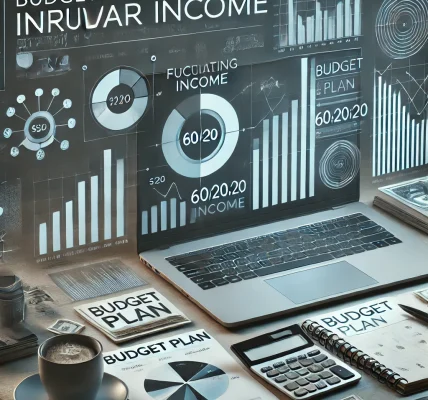In today’s digital world, managing your finances is easier than ever, thanks to the availability of budgeting apps. Whether you’re trying to reduce debt, save for a big purchase, or simply gain better control over your spending, using a budgeting app can help you stay on track. These apps provide valuable insights, automate expense tracking, and empower you to make informed financial decisions.
This article explores how to leverage budgeting apps to optimize your spending habits and improve your overall financial health.
Why Use Budgeting Apps?
1. Automated Expense Tracking
Budgeting apps automatically categorize and track your expenses by syncing with your bank accounts and credit cards. This eliminates the need for manual record-keeping and gives you a real-time overview of your financial situation.
2. Goal Setting and Tracking
Many budgeting apps allow you to set financial goals, such as saving for a vacation or paying off debt. They help you track your progress and adjust your spending habits to stay aligned with your goals.
3. Identifying Spending Patterns
By analyzing your spending trends, budgeting apps can highlight areas where you might be overspending, enabling you to make smarter financial choices.
4. Customizable Budgets
Budgeting apps allow you to create personalized budgets for different categories, such as groceries, entertainment, and transportation, giving you full control over your spending.
Best Budgeting Apps to Consider
1. Mint
Mint is one of the most popular budgeting apps that offers automatic expense categorization, credit score tracking, and bill reminders.
- Pros: Free to use, highly intuitive, and offers goal-setting features.
- Cons: Ads and occasional syncing issues.
2. YNAB (You Need A Budget)
YNAB uses a proactive budgeting approach that assigns every dollar a purpose, encouraging mindful spending.
- Pros: Ideal for zero-based budgeting, detailed reporting, and financial goal tracking.
- Cons: Subscription-based model with a learning curve.
3. PocketGuard
PocketGuard helps prevent overspending by showing how much disposable income you have after covering essentials.
- Pros: Prevents overspending and offers insights into improving cash flow.
- Cons: Limited features in the free version.
4. GoodBudget
GoodBudget follows the traditional envelope budgeting system, helping users allocate funds for specific spending categories.
- Pros: Great for couples or family budgeting and offers manual tracking for cash payments.
- Cons: No automatic syncing with bank accounts.
5. EveryDollar
EveryDollar offers a simple, zero-based budgeting approach that encourages users to assign every dollar a job.
- Pros: Easy to use and ideal for beginners.
- Cons: Premium features require a subscription.
How to Get Started with a Budgeting App
Step 1: Set Clear Financial Goals
Before choosing a budgeting app, define your financial objectives. Are you looking to reduce debt, save for an emergency fund, or control daily spending? Your goals will help determine which app best suits your needs.
Step 2: Select the Right Budgeting App
Choose an app that aligns with your goals and lifestyle. If you prefer hands-on control, YNAB may be the best choice. For automated tracking and insights, Mint is a great option.
Step 3: Connect Your Accounts
Once you’ve selected an app, link your bank accounts, credit cards, and other financial accounts to the app. This will allow the app to automatically track and categorize your transactions.
🔒 Pro Tip: Always ensure the app uses strong encryption and follows strict security protocols to protect your financial data.
Step 4: Set Up Your Budget Categories
Most budgeting apps allow you to create custom categories for your spending. Allocate realistic amounts to essential categories such as rent, groceries, transportation, and discretionary spending.
📊 Pro Tip: Review your past spending habits to create accurate budget categories.
Step 5: Track and Monitor Your Spending
Regularly review your spending patterns to identify areas where you can cut back. Many apps provide monthly reports that highlight trends, helping you refine your budget over time.
Step 6: Adjust Your Budget as Needed
Life circumstances change, and so should your budget. If your income increases or unexpected expenses arise, adjust your budget categories accordingly.
Pro Tips to Maximize the Benefits of Budgeting Apps
1. Set Alerts and Notifications
Enable notifications to receive alerts for upcoming bill payments, exceeding budget limits, and important financial updates.
2. Schedule Regular Budget Reviews
Make it a habit to review your budget at least once a month. This allows you to stay on track and make adjustments if necessary.
3. Use Savings Goals to Stay Motivated
Set savings goals within the app and track your progress. Visualizing your goals helps maintain motivation and discipline.
4. Limit Discretionary Spending
Identify areas where you can cut back, such as dining out or subscription services. Use the insights provided by the app to limit discretionary expenses.
Common Mistakes to Avoid
1. Ignoring Small Transactions
Even small purchases can add up quickly. Always categorize and track minor expenses to maintain an accurate budget.
2. Setting Unrealistic Budgets
Avoid setting overly restrictive budgets that are difficult to maintain. Be realistic and account for occasional indulgences.
3. Forgetting to Update Categories
As your spending patterns change, update your categories to reflect your new financial reality.
Benefits of Using Budgeting Apps
1. Greater Financial Awareness
Budgeting apps provide real-time insights into where your money goes, promoting financial mindfulness.
2. Improved Savings and Debt Reduction
By tracking expenses and setting goals, you can allocate funds toward debt repayment and boost your savings.
3. Reduced Financial Stress
Knowing that you have a clear plan in place reduces anxiety and empowers you to make informed financial decisions.
Conclusion
Leveraging budgeting apps to track and optimize your spending is a powerful way to gain control over your finances. These apps offer automation, insights, and goal-setting features that help you stay on track and make informed decisions. By choosing the right app, setting realistic goals, and maintaining consistency, you can improve your financial health and achieve long-term success.
Ready to optimize your spending? Download a budgeting app today and take the first step toward financial freedom!




